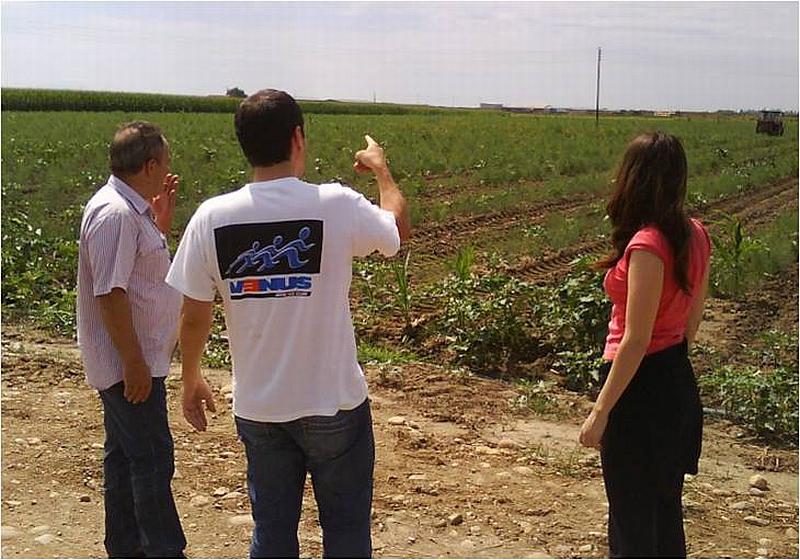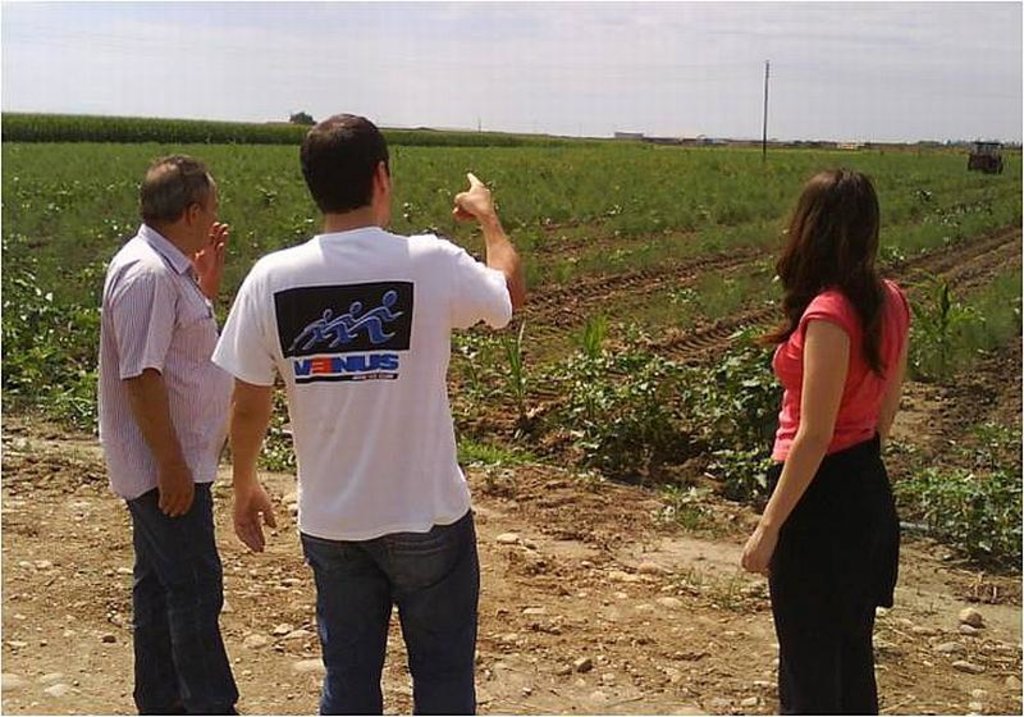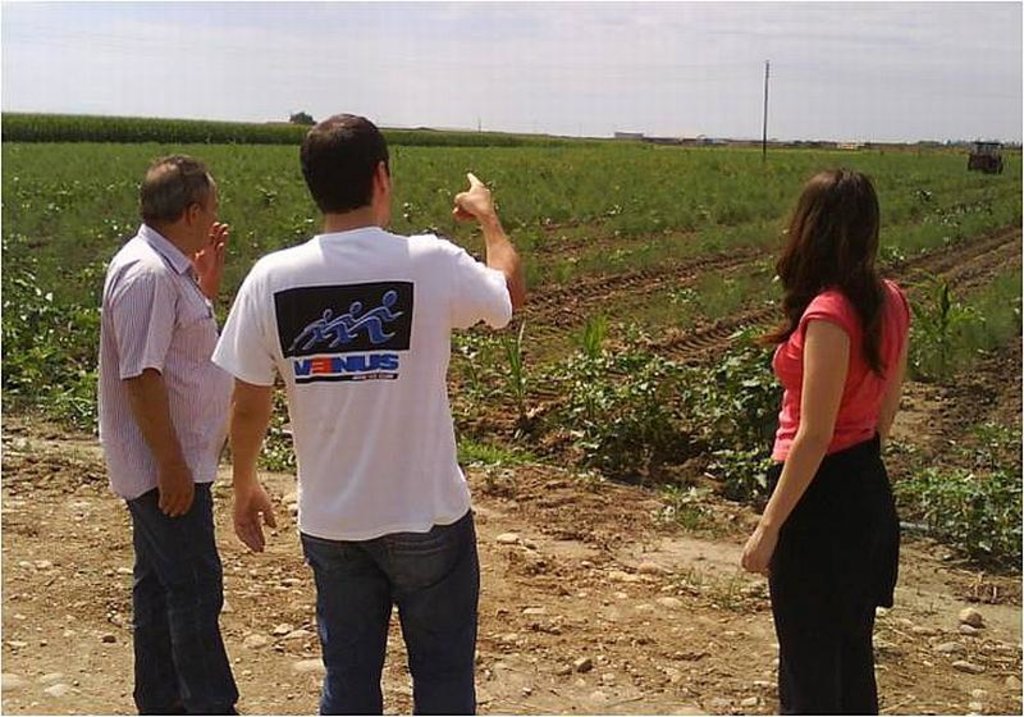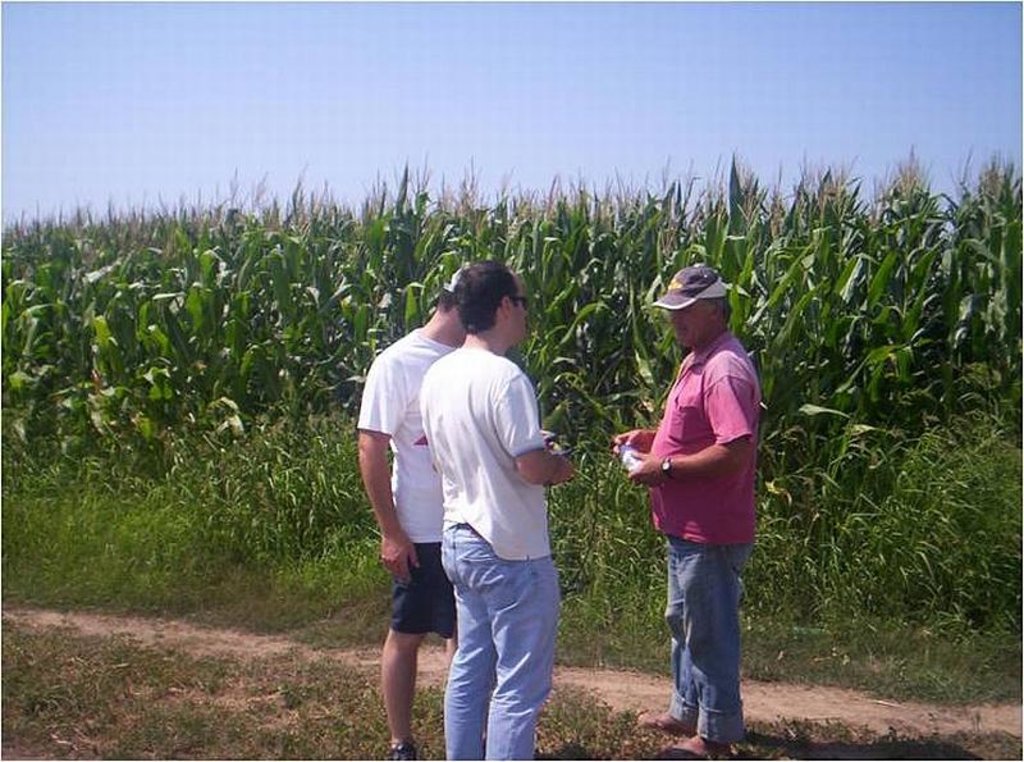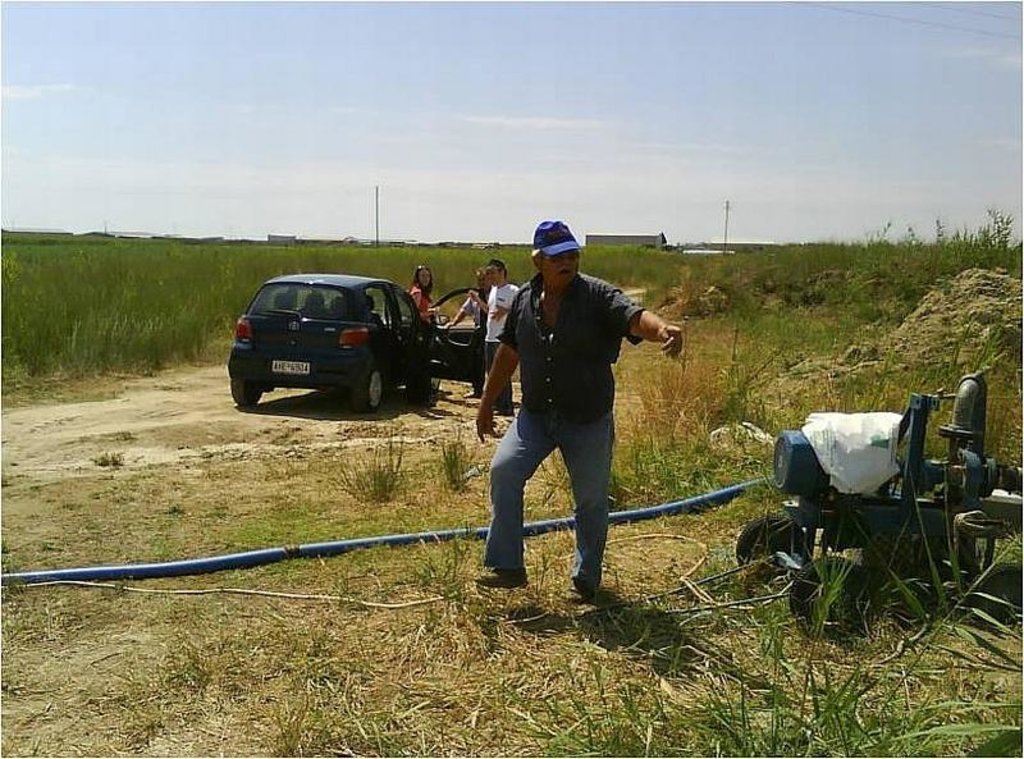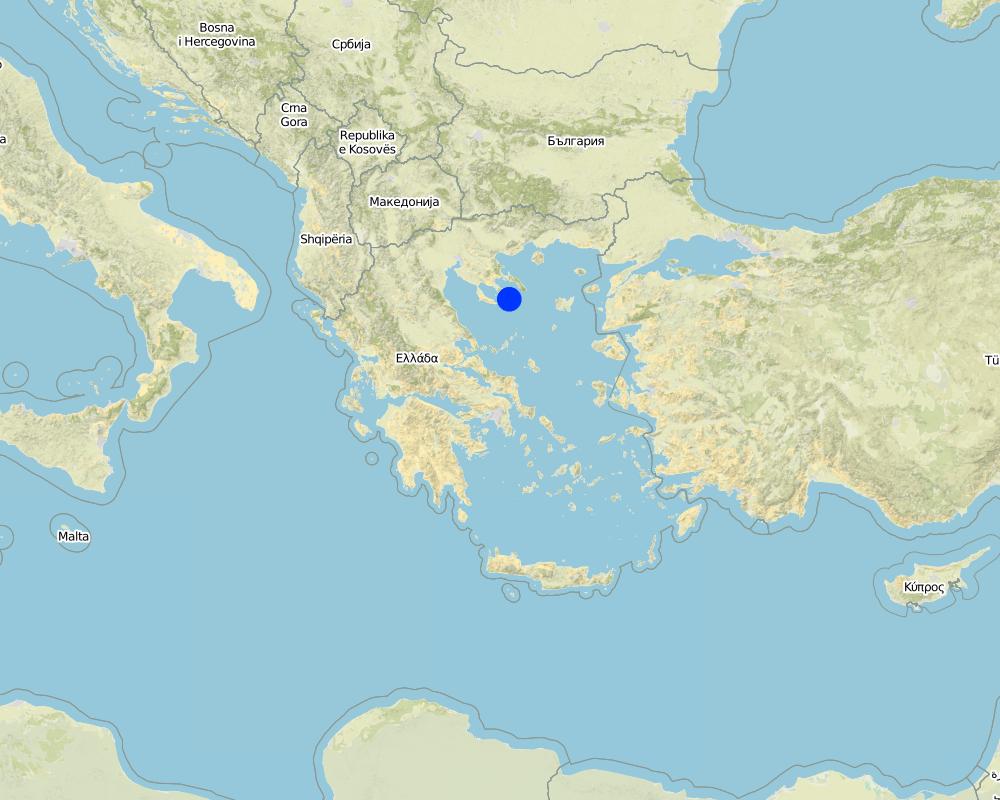Combating Soil Salinization [Greece]
- Creation:
- Update:
- Compiler: John Gkiougkis
- Editor: –
- Reviewer: Fabian Ottiger
ΚΑΤΑΠΟΛΕΜΗΣΗ ΤΗΣ ΑΛΜΥΡΙΣΗΣ ΤΩΝ ΕΔΑΦΩΝ
approaches_2576 - Greece
View sections
Expand all Collapse all1. General information
1.2 Contact details of resource persons and institutions involved in the assessment and documentation of the Approach
SLM specialist:
Giougis Ioannis
+302541079692,
jgiougis@civil.duth.gr
Democritus University of Thrace
Vas. Sofias 12,
Greece
SLM specialist:
Dimantis Vasileios
+302541079692
vdiamant@env.duth.gr
Democritus University of Thrace
Vas. Sofias 12
Greece
SLM specialist:
Pechtelidis Alexandros
+302541079692
apechtel@civil.duth.gr
Democritus University of Thrace
Vas. Sofias 12
Greece
Name of the institution(s) which facilitated the documentation/ evaluation of the Approach (if relevant)
Democritus University of Thrace (Democritus University of Thrace) - Greece1.3 Conditions regarding the use of data documented through WOCAT
The compiler and key resource person(s) accept the conditions regarding the use of data documented through WOCAT:
Ja
1.4 Reference(s) to Questionnaire(s) on SLM Technologies
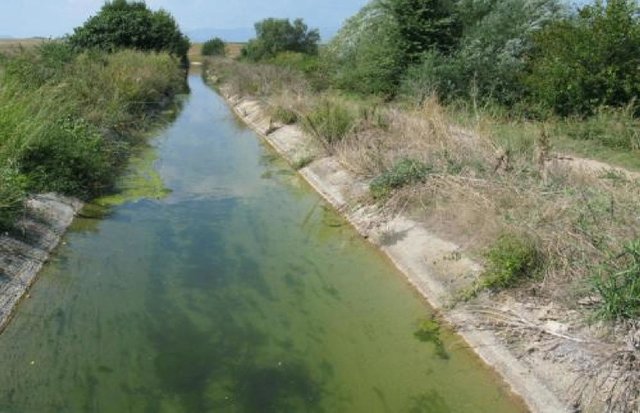
Transport of freshwater from local streams [Greece]
Freshwater transport from local streams for irrigation purposes, in order to replace the traditional form of irrigation (by pumping saline groundwater from wells).
- Compiler: John Gkiougkis
2. Description of the SLM Approach
2.1 Short description of the Approach
Use of freshwater to combat soil salinization.
2.2 Detailed description of the Approach
Detailed description of the Approach:
Aims / objectives: Freshwater transport from surface streams/rivers in order to remediate saline soils.
Methods: Freshwater flushing/irrigation on saline soils.
Stages of implementation: 1) License from local authorities for surface water consumption. 2) License from local electricity provider. 3) Installation of water-pump. 4) Installation of water transport network. 5) Installation of water irrigation sprinklers.
Role of stakeholders: Awareness of local authorities concerning the problem in order to accelerate the issue of the licenses for freshwater exploitation.
2.3 Photos of the Approach
2.5 Country/ region/ locations where the Approach has been applied
Country:
Greece
Region/ State/ Province:
Prefecture of Xanthi
Further specification of location:
East Nestos delta
Map
×2.6 Dates of initiation and termination of the Approach
Indicate year of initiation:
1980
2.7 Type of Approach
- traditional/ indigenous
2.8 Main aims/ objectives of the Approach
The Approach focused on SLM only
Remediation and prevention of soil salinization. Local farmer motivation in order to adopt the SLM technology.
The SLM Approach addressed the following problems: 1) Depending on the pump type (diesel or electric), operational cost is subject to current oil-electricity price. 2) Freshwater not appropriate for sodic type soils reclamation (may enhance soil degradation). 3) Licenses for water pumping from surface streams are subject to bureaucracy. 4) Lack of cash to invest, due to recent economic crisis.
2.9 Conditions enabling or hindering implementation of the Technology/ Technologies applied under the Approach
social/ cultural/ religious norms and values
- hindering
Treatment through the SLM Approach: Appropriate management and control of water usage is required
availability/ access to financial resources and services
- hindering
High equipment cost (water pump and water transport network) and operational cost especially for diesel pumps.
Treatment through the SLM Approach: Government or EU funding for the purchase of the equipment. Replacement of existing diesel pumps with electric and more economic pumps.
institutional setting
- hindering
Bureaucracy for licensing.
Treatment through the SLM Approach: 'Fast track' policy implementation.
legal framework (land tenure, land and water use rights)
- hindering
There is a regulation concerning surface water transport which limits the transportation distance to 500m from nearby streams/rivers.
Treatment through the SLM Approach: Since there is sufficient surface water, the transport distance (500m) can be increased up to 2km in order to extend the area irrigated with freshwater and constrain the area which is irrigated by saline groundwater.
The existing land ownership, land use rights / water rights moderately hindered the approach implementation There were some restrictions on water rights (transport distance from irrigation/drainage canals is limited up to 500m).
3. Participation and roles of stakeholders involved
3.1 Stakeholders involved in the Approach and their roles
- local land users/ local communities
Local farmers
farmer, male, 50 years old, married, greek
- SLM specialists/ agricultural advisers
Democritus University of Thrace
- researchers
Democritus University of Thrace
- local government
Municipality of Topeiros
- national government (planners, decision-makers)
Ministry of Rural Developement and Food (Local Department), Head of Water Management Division, Region of Eastern Macedonia and Thrace
3.2 Involvement of local land users/ local communities in the different phases of the Approach
| Involvement of local land users/ local communities | Specify who was involved and describe activities | |
|---|---|---|
| initiation/ motivation | interactive | Discussions between SLM specialists and local land users. |
| planning | interactive | Discussions between SLM specialists and local land users. |
| implementation | interactive | Discussions between SLM specialists and local land users. |
| monitoring/ evaluation | none | |
| Research | none |
3.4 Decision-making on the selection of SLM Technology/ Technologies
Specify who decided on the selection of the Technology/ Technologies to be implemented:
- mainly SLM specialists, following consultation with land users
Explain:
After a thorough soil analysis and taking into account fresh-water availability in the area, SLM specialists agreed with land users upon the appropriate SLM technology.
Decisions on the method of implementing the SLM Technology were made by mainly by SLM specialists with consultation of land users. As 2.1.5.1.
4. Technical support, capacity building, and knowledge management
4.1 Capacity building/ training
Was training provided to land users/ other stakeholders?
Ja
Specify who was trained:
- land users
Form of training:
- on-the-job
- farmer-to-farmer
- demonstration areas
- public meetings
- courses
Subjects covered:
Discussion with local farmers to realize the extension of the problem and the remediation strategies.
4.2 Advisory service
Do land users have access to an advisory service?
Ja
Specify whether advisory service is provided:
- at permanent centres
Describe/ comments:
Name of method used for advisory service: Discussions ; Key elements: In-situ discussions, Public debates, Demonstrations
Advisory service is inadequate to ensure the continuation of land conservation activities; More funding needed as initiative.
4.3 Institution strengthening (organizational development)
Have institutions been established or strengthened through the Approach?
- no
4.4 Monitoring and evaluation
Is monitoring and evaluation part of the Approach?
Ja
Comments:
economic / production aspects were regular monitored by land users through observations; indicators: Annual income
bio-physical aspects were regular monitored by project staff through measurements; indicators: Crop growth - quality
bio-physical aspects were regular monitored by land users through observations; indicators: Surface soil & crop quality
area treated aspects were regular monitored by land users through observations
management of Approach aspects were regular monitored by project staff through observations
There were no changes in the Approach as a result of monitoring and evaluation
There were few changes in the Technology as a result of monitoring and evaluation: According to previous experience of land user.
4.5 Research
Was research part of the Approach?
Ja
Specify topics:
- ecology
Give further details and indicate who did the research:
Thorough soil and water study of the area. Democritus University of Thrace.
Research was carried out on-farm
5. Financing and external material support
5.1 Annual budget for the SLM component of the Approach
If precise annual budget is not known, indicate range:
- < 2,000
Comments (e.g. main sources of funding/ major donors):
Approach costs were met by the following donors: government (Agricultural Union): 10.0%; international non-government (Desire Project ): 80.0%; local government (district, county, municipality, village etc) (Municipality of Topeiros): 10.0%
5.2 Financial/ material support provided to land users
Did land users receive financial/ material support for implementing the Technology/ Technologies?
Nee
5.3 Subsidies for specific inputs (including labour)
- none
If labour by land users was a substantial input, was it:
- voluntary
5.4 Credit
Was credit provided under the Approach for SLM activities?
Nee
6. Impact analysis and concluding statements
6.1 Impacts of the Approach
Did the Approach help land users to implement and maintain SLM Technologies?
- No
- Yes, little
- Yes, moderately
- Yes, greatly
Transportation and use of freshwater for irrigation purposes is beneficial for plant growth and salt leaching.
Did the Approach empower socially and economically disadvantaged groups?
- No
- Yes, little
- Yes, moderately
- Yes, greatly
There weren't any socially/economically disadvantaged group.
Did the Approach improve issues of land tenure/ user rights that hindered implementation of SLM Technologies?
- No
- Yes, little
- Yes, moderately
- Yes, greatly
No change in legislation. The problem is likely to be overcome in the near future. There will be a revision of the current legislation in the near future.
Did other land users / projects adopt the Approach?
- No
- Yes, little
- Yes, moderately
- Yes, greatly
Mainly the land users whose fields are situated adjacent to surface streams.
Did the Approach lead to improved livelihoods / human well-being?
- No
- Yes, little
- Yes, moderately
- Yes, greatly
Due to better water quality there has been an increased crop production (where the SLM technology applied).
Did the Approach help to alleviate poverty?
- No
- Yes, little
- Yes, moderately
- Yes, greatly
Increased crop production lead to increased farmer's income.
6.2 Main motivation of land users to implement SLM
- increased production
- increased profit(ability), improved cost-benefit-ratio
- payments/ subsidies
- well-being and livelihoods improvement
6.3 Sustainability of Approach activities
Can the land users sustain what has been implemented through the Approach (without external support)?
- yes
If yes, describe how:
However with increasing oil prices it is requisite to install electricity and use electrical pumping stations. For small cropland fields the use of petroleum pumps is feasible.
6.4 Strengths/ advantages of the Approach
| Strengths/ advantages/ opportunities in the land user’s view |
|---|
| test 1 strength - luaa (How to sustain/ enhance this strength: sustain 1 - lu) |
| Strengths/ advantages/ opportunities in the compiler’s or other key resource person’s view |
|---|
| test 1 strength - ownbb (How to sustain/ enhance this strength: sustain 1 - own) |
6.5 Weaknesses/ disadvantages of the Approach and ways of overcoming them
| Weaknesses/ disadvantages/ risks in the land user’s view | How can they be overcome? |
|---|---|
| test 1 weak - luxx | overcome 1 - lu |
| Weaknesses/ disadvantages/ risks in the compiler’s or other key resource person’s view | How can they be overcome? |
|---|---|
| test 1 weak - ownzz | overcome 1 - own |
7. References and links
7.1 Methods/ sources of information
- field visits, field surveys
- interviews with land users
Links and modules
Expand all Collapse allLinks

Transport of freshwater from local streams [Greece]
Freshwater transport from local streams for irrigation purposes, in order to replace the traditional form of irrigation (by pumping saline groundwater from wells).
- Compiler: John Gkiougkis
Modules
No modules


